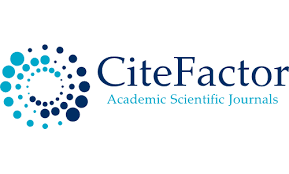Sustainable development: as a whole of stability and instability (Synergetic analysis)
Keywords:
complex, unstable, systematic analysis, chaosAbstract
In this paper, the order resulting from the integration of stability with instability is shown in a systematic form. The synergetic method of forming a picture of the relations of man, nature, and society in the context of globalization explains the essence. It is guaranteed that the definition of chaos will bring a positive result. This shows that it plays an important role in revealing the essence of the problems that are especially relevant to all sectors of society. In particular, it defines the function of the methodological basis as a solution to the problems of the rise and fall of ecological, social, economic, political, spiritual, medical systems. It focuses on the importance of knowing the importance of big and small elements in any situation in the development of a society
References
Program of action. Agenda for the XXI century and other documents of the conferences in Rio de Janeiro. Geneva. 1994. P.1
Knyazeva E.N. Self-reflective synergetics // Questions of Philosophy. - M., 2001. №. 10. - P. 106-107.
Prigogine I.R., Stengers I. Order out of chaos. A new dialogue between man and nature. M., 1986.
Moiseev N. N. Universum. Information. Society. - M.: «Sustainable world», 2001. -P.199.
Prigogine I. From existing to emerging. Time and complexity in the physical sciences. M., 1985.
Prigogine I. Philosophy of instability // Questions of Philosophy. 1991, № 6,
D. Bazorov. Sinergetika paradigmasining falsafiy-metodologik tahlili. Toshkent – 2010
Downloads
Published
Issue
Section
License

This work is licensed under a Creative Commons Attribution-NonCommercial 4.0 International License.
User Rights
Under the Creative Commons Attribution-NonCommercial 4.0 International (CC-BY-NC), the author (s) and users are free to share (copy, distribute and transmit the contribution).
Rights of Authors
Authors retain the following rights:
1. Copyright and other proprietary rights relating to the article, such as patent rights,
2. the right to use the substance of the article in future works, including lectures and books,
3. the right to reproduce the article for own purposes, provided the copies are not offered for sale,
4. the right to self-archive the article.













